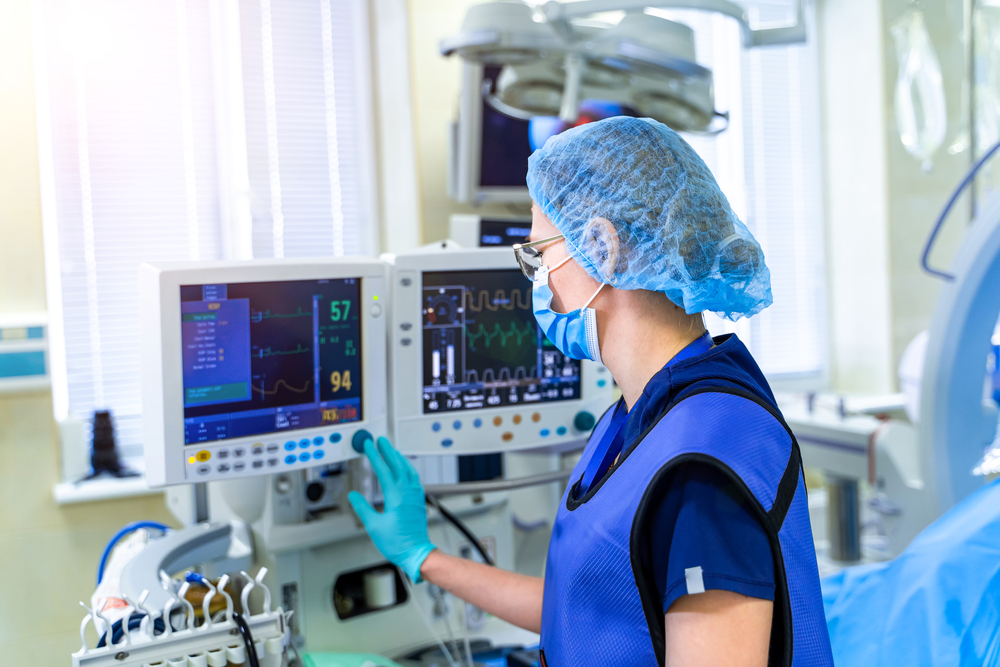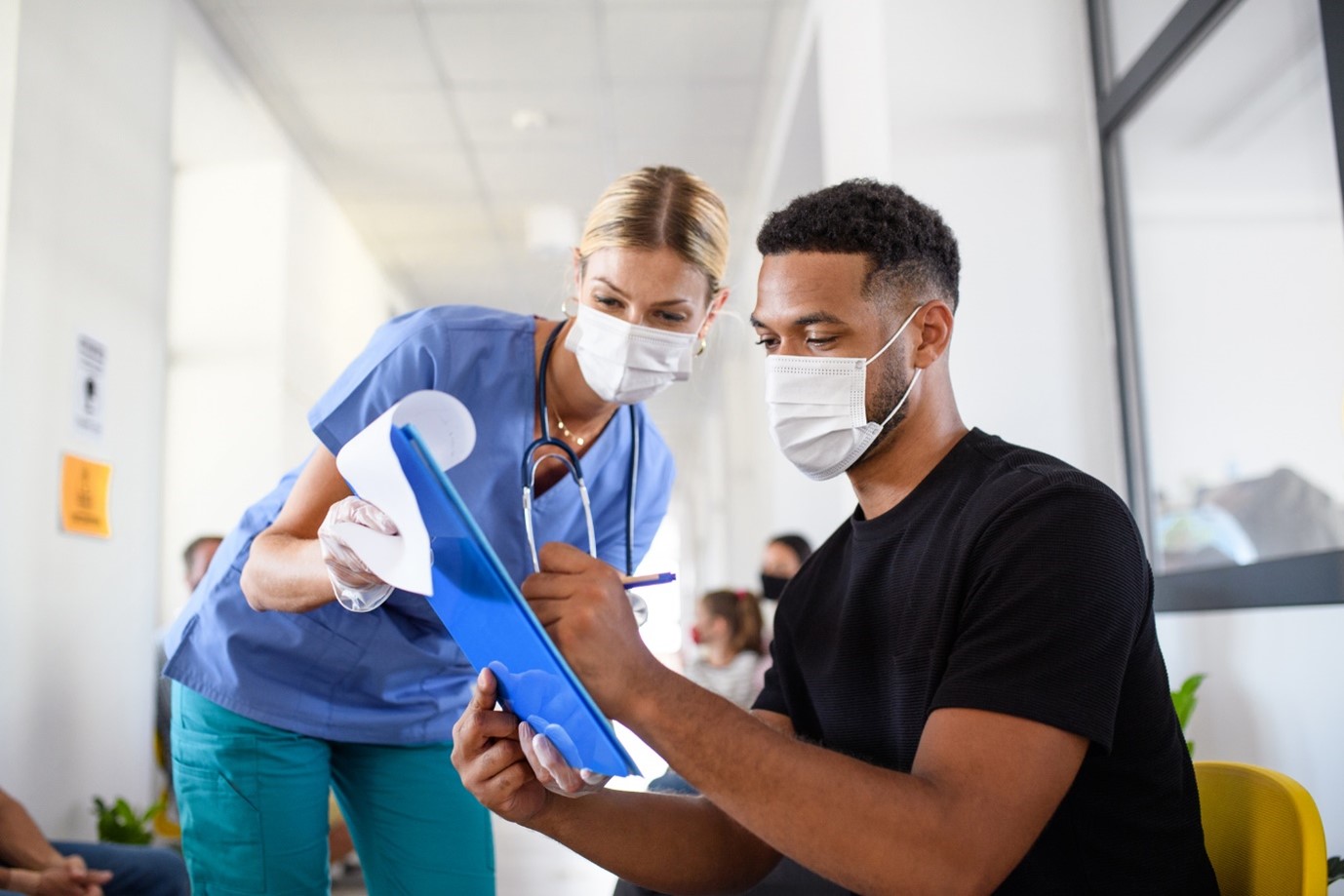Early Warning (NEWS2) Scores to Predict Risk of Severe COVID-19
16 February 2023
Researched used nationwide patient data to evaluate the effectiveness of the NEWS2 score for predicting who was at greatest risk of intensive care.
Overview
The speed and scale of the coronavirus pandemic highlighted the need for rapid research to shape treatments and save lives. When COVID-19 patients arrive in hospital, clinicians have been advised to use the NEWS2 (National Early Warning Risk Score) which aggregates scores of patients’ blood oxygen and pressure, breathing, pulse, temperature and consciousness to predict who is at most at risk of dying or needing ICU care over the ensuing 14 days. But is it effective? Researchers needed nationwide patient data to find out. Thanks to a collaboration with HDR UK they were able to link up with hospitals across the
country, supply them with computer code to interrogate their health records, and start getting answers in
days.
The resulting paper alerted the NHS that, for 14-day outcomes, NEWS2 was of poor-to-moderate use on its own (though it performed better over shorter periods) but there were straightforward ways to increase its accuracy in predicting severe outcomes.
Challenge
In 2020, COVID-19 was a new threat that was little understood, and the sheer volume of hospital admissions put huge pressure on NHS staff and resources. Clinicians were advised to use NEWS2, NHS England’s standard tool for the assessment and response to acute illness, to help predict which patients were at highest risk of severe outcomes (transfer to ICU or death) in the fortnight after admission.
However, NEWS2 was last updated in 2017 and was generally used to anticipate the next 72 hours. Its effectiveness for COVID-19 was, at the time, unknown. For patients with severe COVID-19 it is vital to know who might need organ support or is at risk of dying. If NEWS2 was ineffective at identifying these high-risk patients, the NHS needed to know.
Given the urgency, the research team — led by Ewan Carr, Rebecca Bendayan, James Teo and Richard Dobson of King’s College London — wanted to get results quickly. The fact that so many people were working from home was an additional obstacle. The conventional approach, involving the creation of a large repository of centrally held data, would have been slow and cumbersome.
Solution
The team first analysed data from 1,276 COVID-19 patients admitted to King’s College Hospital NHS Foundation Trust from March to April 2020. Collaboration with HDR UK then gave them a fast, effective and secure way to gather data from other trusts in England to validate their models. This was done by sharing code and trained models, via GitHub, that trusts could run on their own systems to extract the relevant data from existing electronic health records (EHRs).
Five UK NHS trusts took part: Guy’s and St Thomas’ NHS Foundation Trust Hospitals; University Hospitals
Southampton; University Hospitals Bristol and Weston NHS Foundation Trust; University College London Hospitals; and University Hospitals Birmingham — as well as hospitals in Norway and China.
The study analysed data from over 6,000 patients from nine hospitals. This was used to evaluate how well NEWS2 scores measured on admission to hospital could predict severe COVID-19 outcomes – defined as needing ICU care or death.
Much of the work took place in the summer of 2020 and the team was soon able to start gauging the effectiveness of NEWS2 and how it could be improved. After peer review a paper was published in January 2021.
Lessons Learnt
The main finding was that NEWS2 was poor-to-moderate for predicting the most severe cases of COVID-19 over a 14-day period and tended to underestimate who was at most risk. But the team found that accuracy could be increased by supplementing NEWS2 with other routinely collected information including age, oxygen saturation and neutrophil count.
The researchers also found that NEWS2 plus age provided moderate accuracy for severe outcomes over a three-day period.
The study was the largest to date to evaluate the accuracy of NEWS2 for predicting medium-term COVID-19 outcomes. It demonstrated the speed and effectiveness of a federated rather than a centralised approach.
This is something being championed by HDR UK – which provided researchers with the means to swiftly gather large- scale data from multiple sources, across the country.
Impact and outcomes
Healthcare providers are now better placed to help patients with severe cases of COVID-19 and understand the role that NEWS2 can play in identifying those at risk of more severe outcomes. Importantly, the project has highlighted that clinician should not rely on NEWS2 alone but should incorporate other routine assessments when triaging patients at admission.
The team identified HDR UK’s contribution as being highly significant. It facilitated their research, allowing them to take a federated approach and to perform what they described as “rapid and agile analysis”.
The project also raised questions about healthcare scoring systems in general – with concerns that their value (and accuracy in novel circumstances) has often not been subject to proper research.



